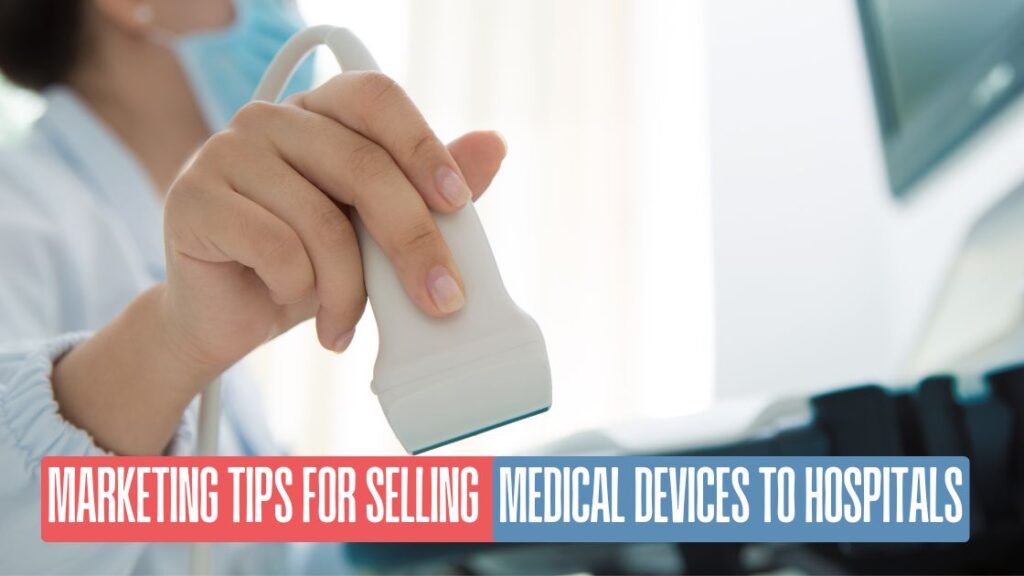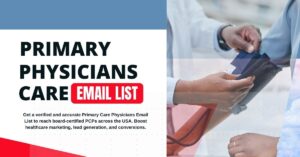The medical device industry is growing rapidly—but selling to hospitals remains a complex and competitive task. Hospitals are cautious buyers. They prioritize clinical outcomes, cost-effectiveness, and regulatory compliance. That means your marketing strategy must be smart, strategic, and credible.
Here are some of the most effective marketing tips for successfully selling medical devices to hospitals, with a special focus on understanding decision-makers, leveraging data, and building long-term trust.
1. Understand the Hospital Buying Committee
Selling medical devices is not like selling to a single customer. Hospitals have a multi-layered decision-making process involving physicians, biomedical engineers, procurement managers, and finance departments. Each of these stakeholders evaluates the product from a different angle—clinical impact, technical feasibility, cost, and compliance.
Tip: Develop buyer personas for each of these roles. Your messaging should address the pain points and priorities of each stakeholder. For example, show the CFO how your device reduces long-term treatment costs, while showing clinicians how it improves patient outcomes.
2. Use a Data-Driven Approach with Hospital Databases
Targeting the right hospitals is half the battle. Instead of generic outreach, focus your efforts using verified data on hospital size, specialties, procurement cycles, and decision-makers.
This is where MedStreamData can give you an edge.
At Med Stream Data , we provide a curated and regularly updated database of hospitals that includes detailed profiles, contact information, and purchasing behavior insights. This empowers your sales and marketing teams to personalize outreach, prioritize high-value hospitals, and reduce wasted effort.
Tip: Use this data to segment your campaigns—for example, by hospital size, geography, or specialty—and tailor your pitch accordingly.
3. Build Credibility Through Clinical Evidence
Hospitals don’t just want innovation; they want proof. They need to be assured that your device works in real-world conditions, complies with regulations, and improves patient care.
Invest in clinical trials, peer-reviewed studies, case studies, or white papers that highlight the impact and reliability of your product. If possible, secure testimonials from respected physicians or institutions already using your device.
Tip: Make clinical evidence a central part of your sales decks, brochures, and website landing pages.
4. Leverage Key Opinion Leaders (KOLs)
Key Opinion Leaders—renowned doctors, surgeons, or healthcare administrators—have a strong influence on hospital purchasing decisions. If a KOL endorses your medical device, hospitals are more likely to take notice.
Partner with these experts to co-create content such as webinars, product walkthroughs, or research papers. Their endorsement can provide the third-party validation needed to move a hospital from interest to action.
5. Simplify the Buying Process
Hospitals are busy environments, and any friction in the buying process can delay or derail a deal. Provide clear documentation, pricing structures, ROI projections, and regulatory approvals (like FDA, CE, ISO) upfront.
Also, be prepared to support them during the onboarding and implementation phases—this adds trust and reduces perceived risk.
Tip: Offer a demo unit or trial period. This allows hospitals to test the device before committing fully.
6. Create Targeted, Educational Content
Instead of hard selling, educate your audience. Use email marketing, whitepapers, LinkedIn campaigns, and blog articles to highlight real-world use cases, breakthrough innovations, or cost-saving scenarios related to your device.
Content tailored to hospital administrators might focus on budget impact, while content for surgeons should dive into features, ease of use, and surgical outcomes.
Tip: Use storytelling—show how your device helped a hospital reduce complications, shorten hospital stays, or increase revenue.
7. Attend Medical Conferences and Trade Shows
Physical presence at industry events is still one of the best ways to build brand awareness and establish relationships in the hospital ecosystem. Medical expos, surgical summits, and tech symposiums bring together hospital buyers, practitioners, and other decision-makers under one roof.
Tip: Don’t just exhibit—host a panel, offer a workshop, or showcase a live demo to make a lasting impression.
8. Build Long-Term Relationships, Not Just Sales
Hospitals prefer to work with suppliers who offer long-term value—not just a one-time transaction. Provide post-sale support, maintenance, training, and regular product updates. This positions your brand as a partner rather than just a vendor.
Tip: Create a dedicated customer success team to manage hospital relationships, ensure satisfaction, and explore upsell opportunities over time.
Final Thoughts
Marketing medical devices to hospitals is a nuanced process that demands strategic planning, credibility, and precision targeting. From leveraging hospital data through platforms like Med Stream Data to building trust with decision-makers and KOLs, every touchpoint matters.
Focus on delivering value, supporting evidence, and personalized outreach—because in the world of hospital sales, it’s not just about what you sell, but how you sell it.







